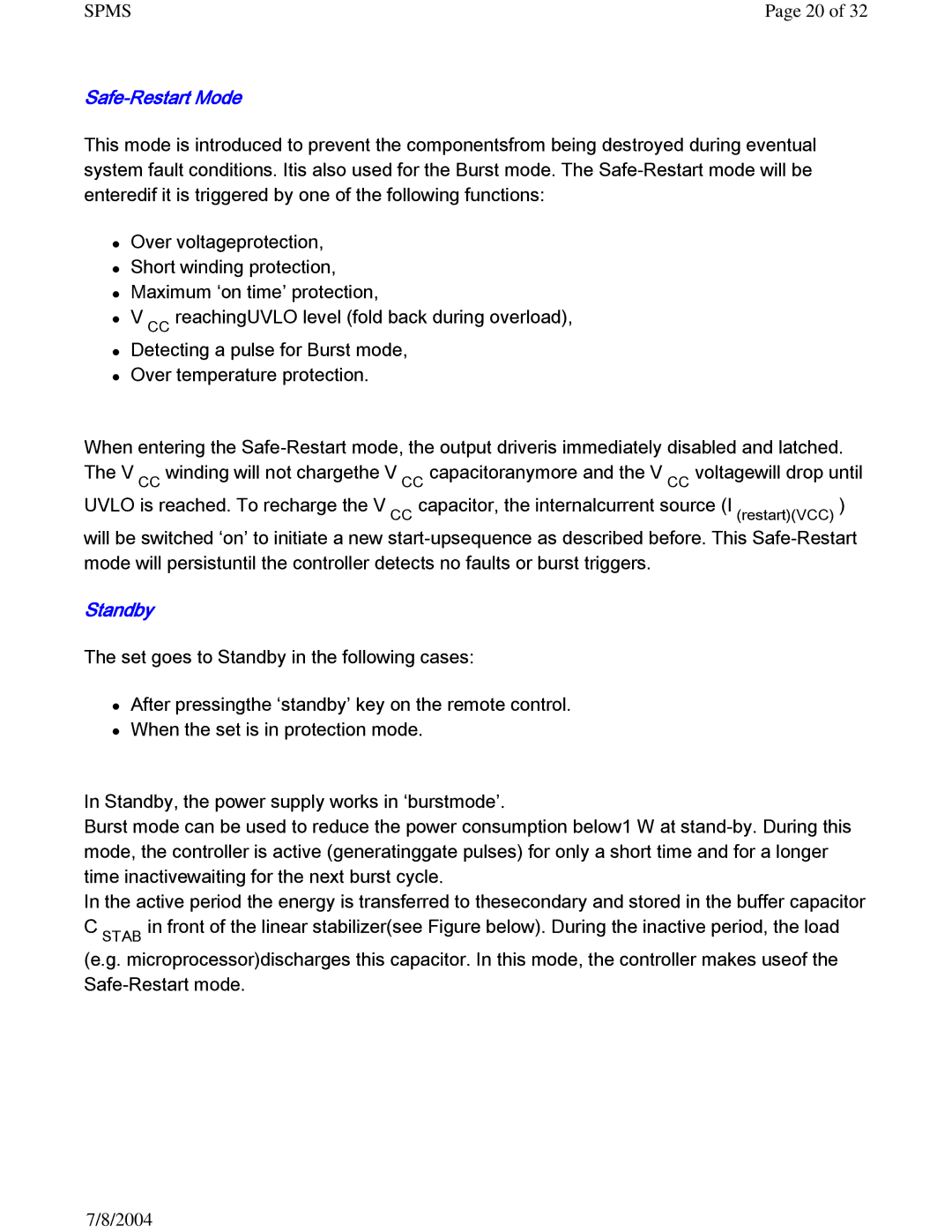SPMS | Page 20 of 32 |
Safe-Restart Mode
This mode is introduced to prevent the componentsfrom being destroyed during eventual system fault conditions. Itis also used for the Burst mode. The
zOver voltageprotection,
zShort winding protection,
zMaximum ‘on time’ protection,
zV CC reachingUVLO level (fold back during overload),
zDetecting a pulse for Burst mode,
zOver temperature protection.
When entering the
Standby
The set goes to Standby in the following cases:
zAfter pressingthe ‘standby’ key on the remote control.
zWhen the set is in protection mode.
In Standby, the power supply works in ‘burstmode’.
Burst mode can be used to reduce the power consumption below1 W at
In the active period the energy is transferred to thesecondary and stored in the buffer capacitor C STAB in front of the linear stabilizer(see Figure below). During the inactive period, the load (e.g. microprocessor)discharges this capacitor. In this mode, the controller makes useof the
7/8/2004
